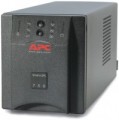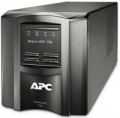Full load operating time
UPS continuous operation time from a fully charged battery when connected to a load with a power equal to the UPS output power (maximum or effective, depending on the type of load, see the relevant paragraphs for details). For a UPS designed to work with a home or office PC, a time of about 10-15 minutes is considered sufficient, this is enough to save data and complete work. To power servers, it is worth using devices with an operating time
of 20 minutes or more.
Half load operating time
UPS continuous operation time from a fully charged battery when connected to a load with a power equal to half the output power of the UPS (maximum or effective, depending on the type of load, see below for details). The operating time with such a load is much longer than for a full load, and even in the simplest models it can reach 20-30 minutes.
Input voltage range
In this case, the input voltage range is implied, in which the UPS is able to supply a stable voltage to the load only due to its own regulators, without switching to the battery. For redundant UPSs (see "Type") this range is quite small, approximately 190 to 260 V; for interactive and especially inverter ones, it is much wider. Some UPS models allow you to manually set the input voltage range.
Efficiency
Efficiency (coefficient of performance) in the case of a UPS is the ratio of its output power to the power consumed from the network. This is one of the main parameters that determine the overall efficiency of the device: the higher the efficiency, the less energy the UPS wastes (due to heating parts, electromagnetic radiation, etc.). In modern models, the efficiency value can reach 99%.
Battery(ies) connection to UPS
Rated voltage of external batteries that can be used in the UPS.
For more information about such batteries, see "
External battery connection", here it is worth saying that the voltage of the external battery must correspond to the voltage for which the UPS is designed. If these parameters differ, at best, the UPS simply will not start, and at worst, overloads and even a fire are possible.
In general, the more powerful the UPS, the higher the voltage of the external batteries it is designed for. However, there is no strict rule. Some models even allow for multiple voltage options, such as 96/108/120 V. It is also worth noting that a power source with the required voltage can be assembled from several lower voltage batteries connected in series: for example, 3 batteries of 12 V can be used to achieve 36 V.
It is important to emphasize that the standard voltages for most modern UPS systems are multiples of 12 V. However, car batteries cannot be used in these devices. Despite having identical voltages, car batteries are designed for a fundamentally different mode of operation. Using them in a UPS can result in, at best, improper functioning of the device, and at worst, fires and even explosions.
External battery connection
Ability
to use an external battery in addition to the UPS's own batteries. Such a battery extends the battery life of the UPS, and its connection is often more convenient than installing additional batteries (for which you have to open the UPS case); on the other hand, the battery makes the device more bulky, because takes up extra space outside.
UPSs with this feature can be supplied with or without internal batteries. Also note that there are models designed to use only external batteries and do not have compartments for internal batteries.
Surge protection
The maximum energy of an electrical impulse in the mains that the UPS is able to compensate. Short pulses with high energy from time to time can occur in almost all networks — for example, due to interference from powerful radiation sources or due to poor-quality operation of lightning protection on power lines; for unprotected devices, such fluctuations can be very harmful. The greater the amount of absorbed energy, the higher, respectively, the level
of impulse protectionprovided by the UPS.
Screen
The presence of the UPS own
display makes management more convenient. Various operating characteristics can be displayed on the external screen: mains voltage and frequency, operating mode, load level, battery charge, bypass status, etc.




